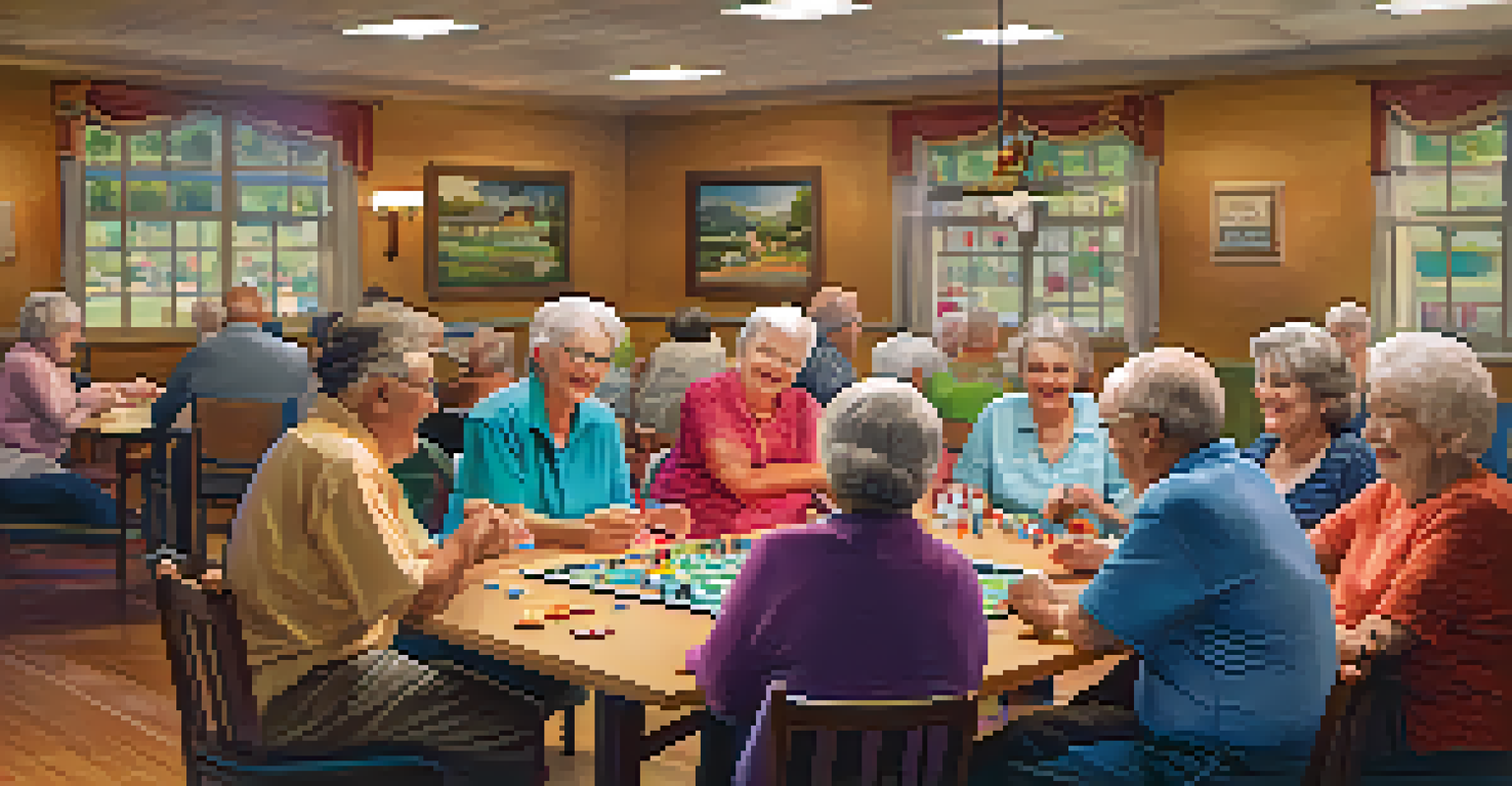Social Isolation in Seniors: Can Marijuana Help Connect?

Understanding Social Isolation in Seniors
Social isolation among seniors is a growing concern, impacting their mental and physical health. It often stems from life changes such as retirement, loss of loved ones, or mobility issues. This isolation can lead to feelings of loneliness, depression, and a decline in overall well-being.
Loneliness can be a trap, but connection can be a key to joy.
Many seniors find themselves disconnected from family and friends, leading to a sense of invisibility. The lack of social interaction can exacerbate existing health problems, creating a vicious cycle. Recognizing the signs of social isolation is critical to addressing and mitigating its effects.
Fortunately, there are various approaches to combat this issue, including community programs and therapies. One emerging area of interest is the potential role of marijuana in fostering social connections among seniors.
The Role of Marijuana in Social Interaction
Marijuana has been known to create a sense of relaxation and euphoria, which can help break down social barriers. For seniors, this can translate into increased comfort in social settings, encouraging them to engage with others. Many users report feeling more open and communicative after using marijuana.

Moreover, marijuana can help alleviate anxiety, making social interactions less daunting. When seniors feel less anxious, they are more likely to participate in gatherings, whether it’s a family dinner or a community event. This can lead to stronger connections and a greater sense of belonging.
Social Isolation Affects Seniors
Many seniors experience social isolation, leading to loneliness and a decline in mental and physical health.
It's important to note that experiences with marijuana can vary widely among individuals. Factors such as dosage, strain, and personal tolerance all play a role in how it might affect a senior's social experience.
Potential Benefits of Marijuana for Seniors
Aside from its potential to enhance social interactions, marijuana may offer several health benefits for seniors. It can help manage chronic pain, improve sleep quality, and alleviate symptoms of anxiety and depression. These benefits can create a more positive outlook on life and encourage more social engagement.
The greatest gift of life is friendship, and I have received it.
For instance, a senior dealing with chronic pain may hesitate to attend social events due to discomfort. However, if marijuana alleviates that pain, they may feel more inclined to join friends and family. This ripple effect can significantly enhance their quality of life.
Furthermore, participating in social activities can lead to improved mental health, creating a feedback loop of positivity. This interconnectedness between physical comfort and social engagement is essential for promoting well-being in seniors.
Research on Marijuana and Seniors
While anecdotal evidence suggests marijuana may help seniors with social isolation, research in this area is still evolving. Some studies indicate that cannabis can improve mood and social behavior, but more comprehensive research is needed. Scientists are beginning to explore how different strains and forms of marijuana affect cognitive and social functions in older adults.
In recent years, the growing acceptance of marijuana has led to increased funding for research. This is crucial for understanding both the benefits and risks associated with its use in seniors. As more studies emerge, they may provide valuable insights into how marijuana can be effectively integrated into senior care.
Marijuana May Foster Connections
Marijuana can help reduce anxiety and promote social interactions, potentially enhancing seniors' social engagement.
However, it's essential for seniors to consult healthcare providers before trying marijuana. This ensures they make informed decisions based on their unique health needs and circumstances.
Addressing Concerns About Marijuana Use
Despite its potential benefits, there are concerns regarding marijuana use among seniors. Some worry about the possibility of addiction, especially as older adults may have a history of substance use. Additionally, marijuana can interact with various medications, making it crucial for seniors to approach its use cautiously.
Education is key in addressing these concerns. Understanding the differences between various strains, such as indica and sativa, can help seniors make informed choices. Indica strains are often associated with relaxation, while sativa strains are typically more energizing.
Ultimately, open communication with healthcare providers can help mitigate risks and maximize the potential benefits of marijuana. Seniors should feel empowered to discuss their options and preferences with their doctors.
Creating Supportive Environments for Seniors
To effectively combat social isolation, it’s essential to create supportive environments for seniors. This can include community centers offering events that encourage interaction, such as game nights, art classes, or wellness workshops. Such spaces can foster connections and reduce feelings of loneliness.
Additionally, incorporating marijuana into these environments, where appropriate and legal, could further enhance these social opportunities. For example, a community gardening project might integrate educational sessions on the responsible use of marijuana for relaxation and pain relief.
Research on Marijuana Is Growing
While initial studies suggest benefits of marijuana for seniors, more comprehensive research is needed to understand its effects.
By blending social activities with educational resources about marijuana, we can create a more inclusive atmosphere that promotes holistic well-being for seniors.
Conclusion: The Future of Social Connectivity
As society becomes more aware of the challenges faced by seniors, exploring innovative solutions is essential. Marijuana presents a unique opportunity to potentially enhance social connectivity among older adults. While it may not be a one-size-fits-all solution, its benefits warrant further exploration.
By combining traditional social strategies with modern approaches like marijuana use, we can help seniors reconnect with their communities. It’s about fostering environments where they feel valued, understood, and connected.

In the end, the goal is to ensure that seniors lead fulfilling lives, filled with connection and joy. As more research unfolds, we may discover even more ways to use marijuana responsibly to enhance social engagement and overall well-being.